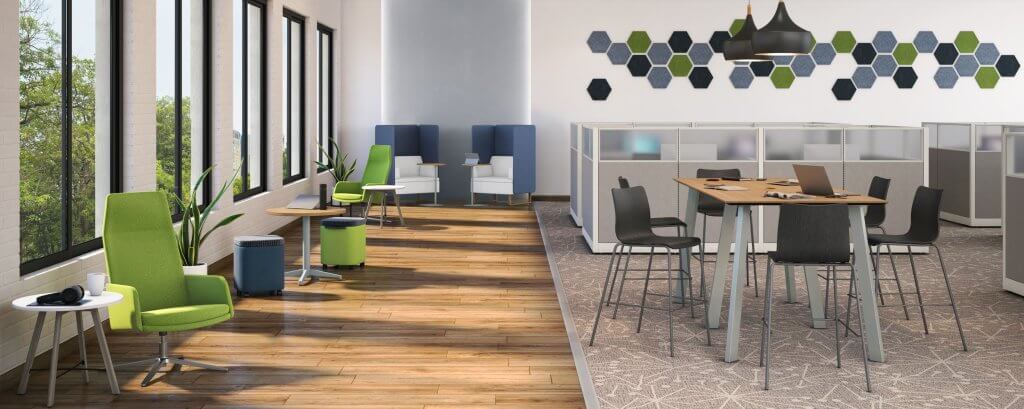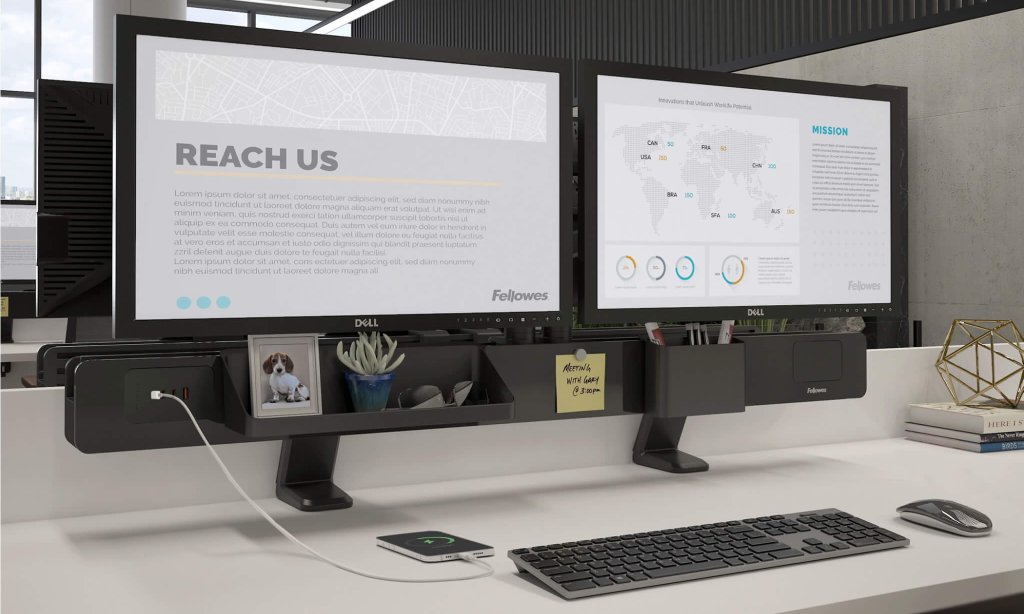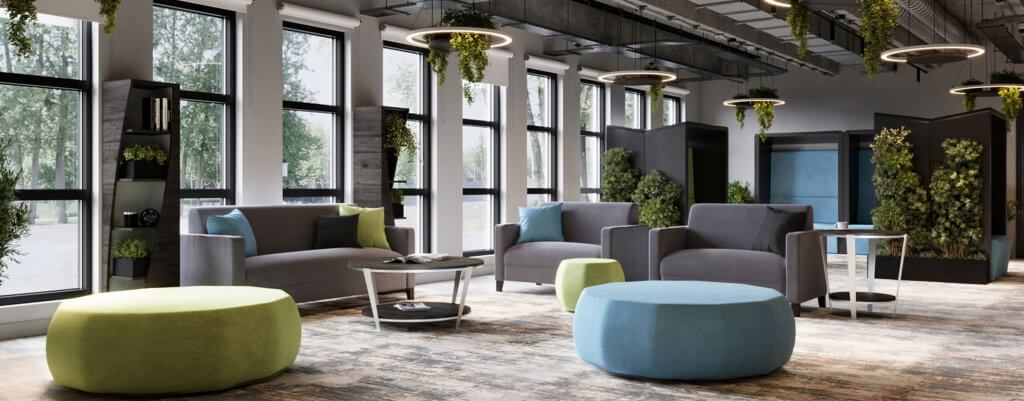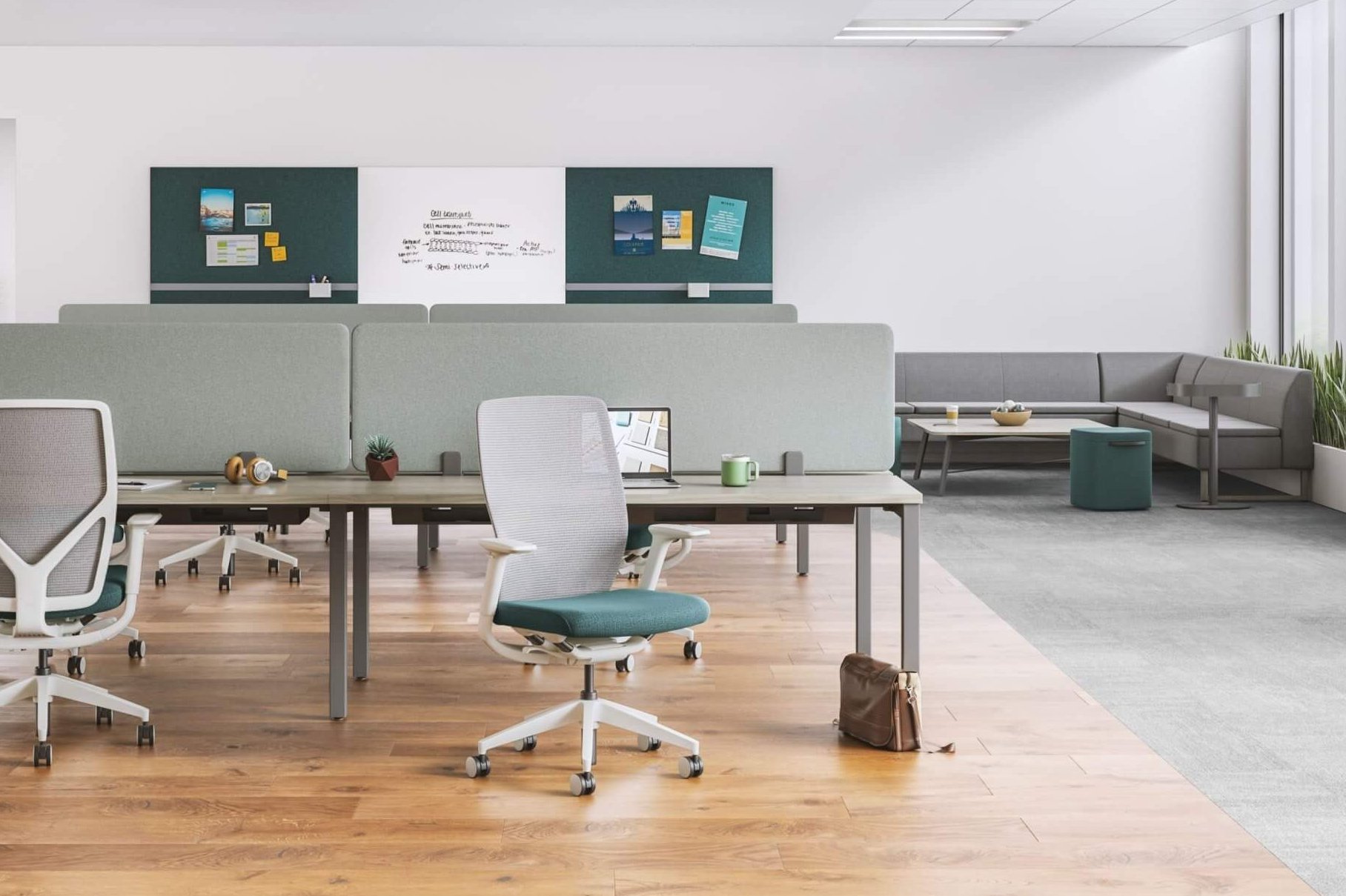In the wake of the global shift toward remote work, many organizations are navigating the challenges of accommodating a hybrid workforce—employees who split their time between working remotely and in the office. As companies adapt to this new paradigm, the design of office spaces takes on heightened significance. A well-designed office can serve as a hub for collaboration, innovation, and employee engagement, fostering a sense of community and belonging among both in-person and remote workers.
The hybrid workforce presents unique opportunities and challenges for office space design. On one hand, the physical office remains a vital asset for facilitating face-to-face interactions, fostering team cohesion, and nurturing company culture. On the other hand, it must also accommodate the needs of remote workers who rely on virtual collaboration tools and flexible work arrangements.

One of the key considerations in designing office spaces for the the hybrid workforce is flexibility. Flexible layouts and modular furniture allow organizations to adapt to changing needs and preferences, providing a mix of collaborative areas, private workstations, and communal spaces that cater to diverse work styles and activities. This flexibility empowers employees to choose where and how they work most effectively, whether in the office, at home, or in alternative work environments.
In addition to flexibility, office space design should prioritize technology integration to support seamless communication and collaboration between in-person and remote workers. Equipping meeting rooms with video conferencing capabilities, interactive displays, and cloud-based collaboration tools enables hybrid teams to collaborate effectively regardless of their physical location. Furthermore, investing in ergonomic furniture and wellness amenities promotes employee health and well-being, whether employees are working in the office or remotely.

Beyond practical considerations, office space design plays a crucial role in shaping organizational culture and employee experience. The physical environment communicates company values, fosters a sense of belonging, and reinforces shared goals and objectives. By creating spaces that reflect the company’s culture and brand identity, organizations can strengthen employee engagement and loyalty, even in a hybrid work setting.
Moreover, office spaces serve as hubs for social interaction, networking, and professional development opportunities. Designing collaborative zones, breakout areas, and communal gathering spaces encourages spontaneous interactions and knowledge sharing among employees, fostering innovation and creativity. These spaces also facilitate team-building activities, training sessions, and mentorship programs that contribute to employee growth and development.

As organizations navigate the complexities of the hybrid workforce, thoughtful office space design emerges as a strategic imperative for success. By creating flexible, technology-enabled, and engaging work environments, organizations can cultivate a sense of community, foster collaboration, and drive productivity among both in-person and remote workers. In doing so, they position themselves to thrive in an increasingly dynamic and interconnected business landscape. In conclusion, the importance of office space design for the hybrid workforce cannot be overstated. By prioritizing flexibility, technology integration, employee well-being, and cultural alignment,
Join Our Newsletter
Sign up to receive updates and special offers.
"*" indicates required fields

